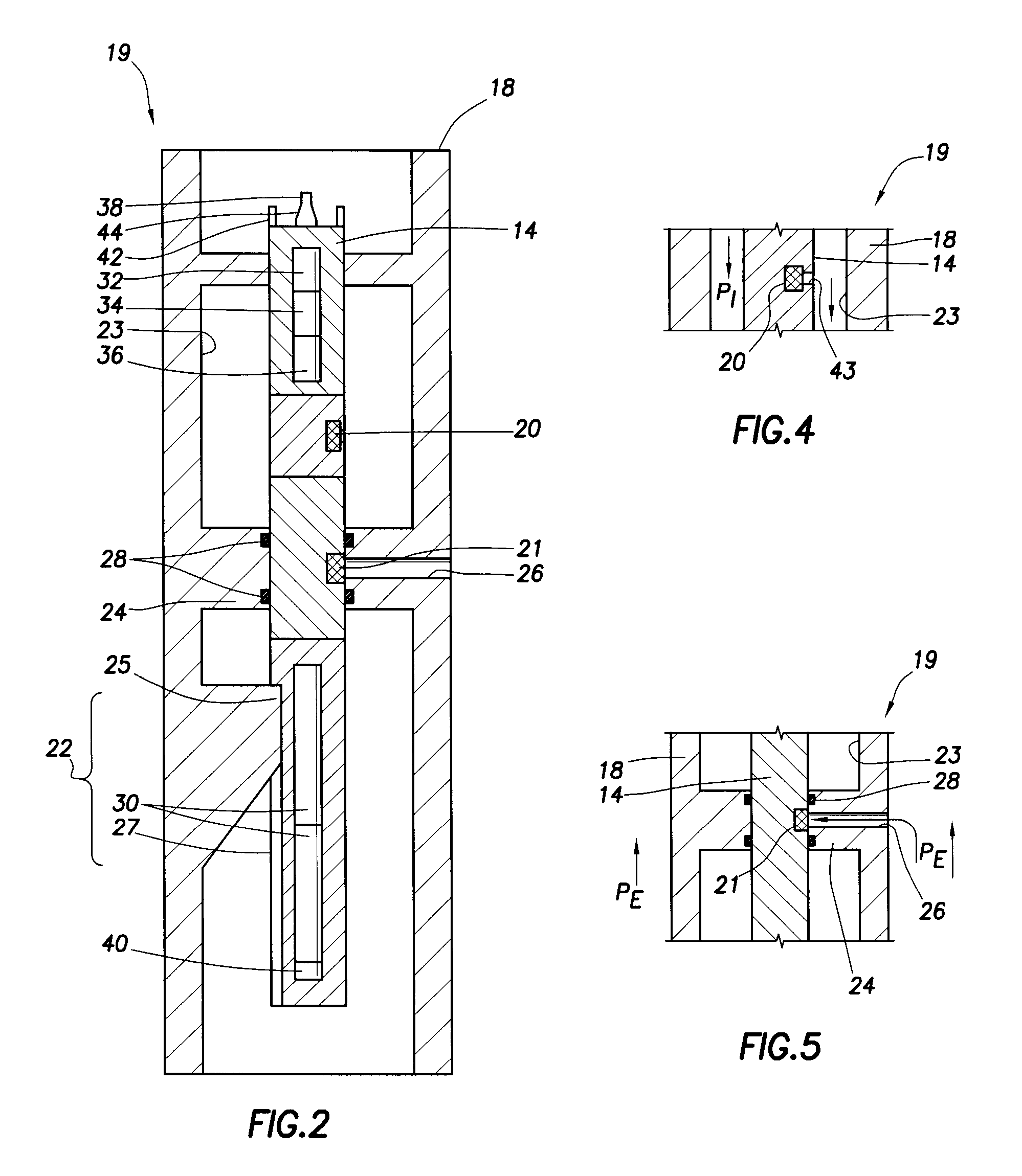While drilling system and method
- Summary
- Abstract
- Description
- Claims
- Application Information
AI Technical Summary
Benefits of technology
Problems solved by technology
Method used
Image
Examples
Embodiment Construction
[0044]FIG. 1 is a schematic diagram of a drilling rig 10 and a drill string 12. The drilling rig is mounted on the rig floor 15 and is connected to and supports the drill string through an intricate system of cables and pulleys (not shown). The drill string is suspended from the rig 10 and into a wellbore 17 penetrating a formation F. The drill string includes drill pipes 16 (three are shown in FIG. 1), a bottom hole assembly (BHA) 9 and a drill bit 5 at a lower end thereof. Typically, only a portion of the weight of the drill string is supported at any one time by the formation. The rest is typically kept in suspension by the drilling rig, the cables and pulleys and other supporting components. Drilling of the wellbore commences when the bit is made to turn by various means, either by turning the rig floor rotary table (not shown), or by a drilling motor (not shown) connected between the drill bit and the rest of the drill string.
[0045] During the drilling operation a special flui...
PUM
 Login to View More
Login to View More Abstract
Description
Claims
Application Information
 Login to View More
Login to View More - R&D
- Intellectual Property
- Life Sciences
- Materials
- Tech Scout
- Unparalleled Data Quality
- Higher Quality Content
- 60% Fewer Hallucinations
Browse by: Latest US Patents, China's latest patents, Technical Efficacy Thesaurus, Application Domain, Technology Topic, Popular Technical Reports.
© 2025 PatSnap. All rights reserved.Legal|Privacy policy|Modern Slavery Act Transparency Statement|Sitemap|About US| Contact US: help@patsnap.com



